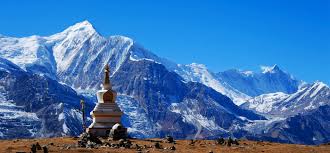The Annapurna Circuit Trek is one of the most popular and breathtaking trekking routes in Nepal, attracting thousands of trekkers every year. If you’re planning this adventure, knowing the cost involved is essential for budgeting and preparation. This guide breaks down the key expenses so you can plan your trek with confidence.
What Are the Main Costs Involved in the Annapurna Circuit Trek?
The major costs for the Annapurna Circuit Trek include permits, accommodation, food, guide and porter services, equipment, and transportation. Each of these elements can vary depending on your style of travel and preferences.
How Much Do Permits for the Annapurna Circuit Trek Cost?
To trek the Annapurna Circuit, you need two main permits: the Annapurna Conservation Area Permit (ACAP) and the Trekkers’ Information Management System (TIMS) card.
- ACAP costs approximately $30 USD
- TIMS costs around $20 USD for independent trekkers
Permits must be purchased before starting the trek and are essential for conservation and safety.
What Is the Cost of Accommodation and Food During the Trek?
Accommodation along the circuit varies from basic teahouses to more comfortable lodges. On average, a night’s stay costs between $5 to $15 USD depending on the location and season. Food prices typically range from $5 to $10 USD per meal. Budget travelers can manage with as little as $15–$20 USD per day, while those seeking more comfort may spend $30 or more.
How Much Should You Budget for Guides and Porters?
Hiring a guide or porter is optional but recommended for safety and convenience.
- Guide fees generally range from $25 to $30 USD per day
- Porters cost about $20 USD per day, plus food and accommodation
Using local guides also supports the community and enhances the trekking experience.
What Gear and Equipment Costs Should You Consider?
If you don’t own trekking gear, renting or buying essentials like sleeping bags, down jackets, and trekking poles is necessary. Renting gear can cost between $5 to $15 USD per item per day. Investing in quality gear ensures safety and comfort throughout the trek.
How Much Is Transportation to and from the Annapurna Circuit?
Transportation costs include flights or buses to Kathmandu, and local transport to the starting point of the trek (Besisahar or Jagat). A bus ticket from Kathmandu to Besisahar costs about $10 USD, while private taxis are more expensive. Return transportation costs should be included in your overall budget.
How to Budget for Unexpected Expenses on the Annapurna Circuit Trek?
It’s wise to set aside extra funds for emergencies, extra meals, tips, and souvenirs. A contingency budget of 10-15% of your total trip cost is recommended.
Where Can You Find Reliable Information on Annapurna Circuit Trek?
For detailed and reliable trekking guides, check resources like USA Time Magazine and local trekking agencies. These sources offer expert advice and current updates on trekking conditions. Additionally, platforms like IPTV Monster provide travel documentaries and shows that include Nepal trekking experiences.
On-Trail Costs: Permits, Accommodation, and Food
Once you’re on the trail, the main expenses include permits, accommodation, food, and miscellaneous daily costs. These expenses vary depending on whether you trek independently or with a guided group.
Trekking Permits
To trek the Annapurna Circuit, you need two permits: the Annapurna Conservation Area Permit (ACAP) and the Trekkers’ Information Management System (TIMS) card. The ACAP costs $30 per person, and the TIMS card costs $20 for independent trekkers or $10 if you’re with a registered agency. Both permits are mandatory and can be o
Conclusion
Trekking the Annapurna Circuit is a once-in-a-lifetime experience that doesn’t have to cost a fortune. By planning carefully and making smart choices like trekking with a local guide, eating local food, and avoiding unnecessary luxuries you can keep your costs manageable while still enjoying the journey.
The key is to prioritize safety and preparation over cutting corners. Invest in good insurance, hire a guide for safety (as required), and budget for unexpected expenses. With the right mindset and a well-planned budget, the Annapurna Circuit will reward you with memories that far outweigh the cost.
